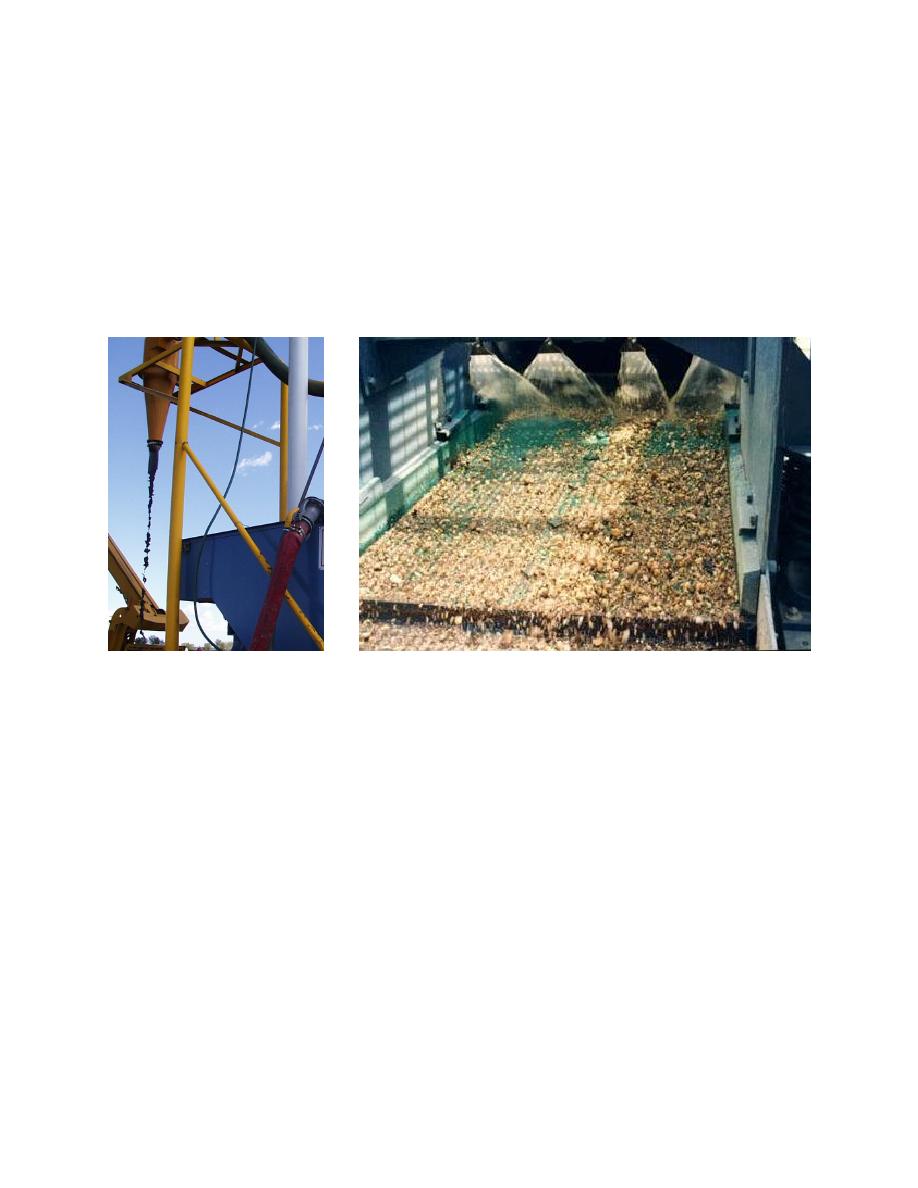 |
||
|
|
||
| |||||||||||||||
|
|
 ERDC TN-DOER-T7
October 2004
Materials loading to the presses and equipment abrasion are reduced.
Polymer costs may be reduced. Dosage of polymers added for the purpose of coagulating
fine materials is determined by the solids concentration in the slurry, and is expressed in
terms of grams polymer per gram solids. Chemical demand can be reduced by removing the
sand, which competes with the fine materials for the polymer.
Long-term storage capacity requirements may be reduced if alternative uses are available for
the sand. Sand removal as a volume reduction measure and beneficial use of dredged
materials are topics extensively discussed in a number of other publications (Olin-Estes et al.
2002; Olin-Estes and Palermo 2000a, b; Olin-Estes 2000; Great Lakes Commission 2004a, b).
Figure 3. Hydrocyclone
Figure 4. Wet screen
Wet Screen. A wet screen may be used to achieve preliminary size separation of material.
Material may be fed onto the screen dry, and washed through the screen by water jets mounted
on the top of the screen (Figure 4). The screens are usually mechanically vibrated to facilitate
separation. Vibrating wet screens can be useful in breaking up agglomerated clay containing
material. Decks are wire or polymer with square or rectangular openings. The openings may
blind when presented with grasses or similar debris, thus necessitating the scalping screen.
Surge Tanks/Mixers. One of the principal challenges in incorporating a dewatering circuit as
part of a dredging process is the interface between the dredge and the dewatering circuit.
Typical dredge sizes used in large-scale maintenance dredging projects are too large to interface
well with a dewatering circuit unless significant buffering capacity and system redundancy are
incorporated in the dewatering circuit. Because of this, smaller dredges (6- or 8-in. dredges) are
typically used. The comparative cost compromise between reduced production at the dredge
versus increased capacity of the dewatering circuit, must be balanced in the cost/benefit
evaluation.
5
|
|
Privacy Statement - Press Release - Copyright Information. - Contact Us - Support Integrated Publishing |